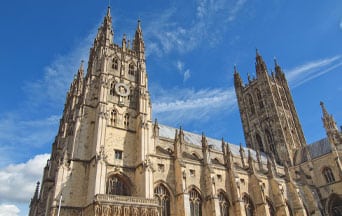
The Oxford Movement began shortly after Catholic Lay Leader Daniel O’Connell compelled the English government to suppress some Anglican dioceses in Ireland.
The Movement’s “flash point” was a sermon on “National Apostasy” delivered by Anglican Pastor John Keble on July 14, 1833. Pastor Keble’s sermon’s resounded broadly in Protestant circles.
Recovering the Sacred
By this time, the Anglican Church had become a primarily governmental body, largely uninterested in religion or salvation. This careless attitude on the part of high ecclesiastical dignitaries increased the secular power. At the same time, it provoked widespread discontent in various strata of public opinion. This uneasiness stirred a desire in more conscientious people to react against clerical negligence.
Oxford University, a bastion of British Protestantism, started to lead the disaffected. Its leaders worked to restore theology studies, which the university had completely abandoned. Younger professors shared the aspirations of students seeking a renewal of religious life and managed to revive interest in theology in intellectual circles. Keble’s sermon powerfully motivated them to take a stand.
Disagreements About Methods
A few days later, on the 25th of July, an important meeting took place in the presbytery of another influential pastor, Hugh James Rose. Pastor Rose invited the Anglican theologian William Palmer of Worcester College, Dublin, A. P. Perceval, son of a peer of the kingdom and chaplain to the last two kings (George IV and William IV), and R. H. Froude, the brightest of the young Oxford professors.
Rose proposed the group write a letter to the Archbishop of Canterbury. Along with assurances of their fidelity to the ecclesiastical authorities, the missive would describe the changes they deemed essential to improve the country’s religious life. This letter was intended to be signed by as many pastors as possible, presumably forcing the hierarchy to review its positions.
Eternal and Natural Law: The Foundation of Morals and Law
However, William Palmer did not believe the letter would be effective. He suggested creating an association to unite all ecclesiastics with “good ideas.”
Professor Froude opposed both proposals. He argued that it was impossible to reconcile traditional “low church”1 Protestantism with the ideals that animated his Oxford colleagues.
The meeting ended without any practical result.
“Tracts for the Times”
Upon returning to Oxford University, the deeply discouraged Froude found in John Henry Newman, an enthusiastic collaborator. Newman, a professor at Oriel College, also believed the measures Rose and Palmer had proposed would be ineffective, but he was also determined to heed Keble’s appeal.
Newman began publishing tracts, at first anonymously, under the general title of “Tracts for the Times.” These influential pamphlets expounded the ideas circulating in Oxford. Propagandists roamed England on horseback, distributing these pamphlets to all Anglican parsonages.
The success of the initiative brought new collaborators. Keble, Edward Pusey, and many others joined the Movement. Eventually, Newman became the leader of the campaign to revise Anglican theology. Gradually, the tracts lost their propagandistic character and became genuine treatises.
The environment that favored countless conversions to the true Faith and marked the religious history of England in the nineteenth century is partly due to them.
 Learn All About the Prophecies of Our Lady of Good Success About Our Times
Learn All About the Prophecies of Our Lady of Good Success About Our Times
Newman was the soul of the Oxford Movement and intended to dedicate his entire life to it. He could hardly imagine that the Movement would practically dissolve within a few years, as many of its members, including Newman himself, became Catholic.
Groping Toward the True Church
In addition to writing the Tracts, Newman began a series of lectures at Saint Mary’s Chapel. At the time, the largely abandoned chapel was only used for the vice chancellor and professors to gather while organizing academic processions. Attendance at these lectures grew, and listeners attracted by Newman’s renown also came from other colleges.
One day, William George Ward, a boisterous teacher from Balliol College, was taken to Saint Mary’s by a friend. He was capable of great enthusiasm and endowed with raw sincerity and a voice that could dominate any audience. Ward turned the conference into a debate and left it convinced. He gave himself entirely to the Movement and, after Newman, was the most important of its members. He used to reply to anyone who asked him what his beliefs were: “Credo in Newmanum!”
However, while sincerely affirming his adhesion, Ward did not hesitate to present Newman with objections. More coherent than Newman, Ward’s arguments made the lectures livelier by fascinating the audience with his sonorous voice, usual good humor and the passion with which he argued. Often, Newman could not stand Ward’s implacable logic, whose repeated asides forced Newman to go further than he wanted. Newman went so far as to ask the sacristan not to place the chapel chairs facing the speaker but to the side, like the stalls of a choir, so he could not see Ward as he spoke.
Science Confirms: Angels Took the House of Our Lady of Nazareth to Loreto
As long as they remained Protestants, they worked together, and their union fostered the Oxford Movement’s incomparable success.
Disagreement About Ultramontanism
Much later, the differences between the two grew sharper. After converting to the True Faith, Newman and Ward often argued on opposing sides. Most importantly, Ward became a champion of Ultramontanism, a conviction that Newman, unfortunately, did not share.
Initiated to rebuild the Anglican Church, the Oxford Movement led many of its most influential members to Catholicism. Thanks to the Movement, all gained a better foundation for their faith.
Photo Credit: © Claudio Divizia – stock.adobe.com
Footnotes
- Editor’s note: Anglican worship closely resembled modern Methodism at the time. This came to be known as “low church.” The Oxford Movement advocated bringing some Catholic elements into Anglican worship, such as increasing the importance of liturgy, the clergy and some elements of Gregorian Chant. In popular parlance, this was known as “high church.”

